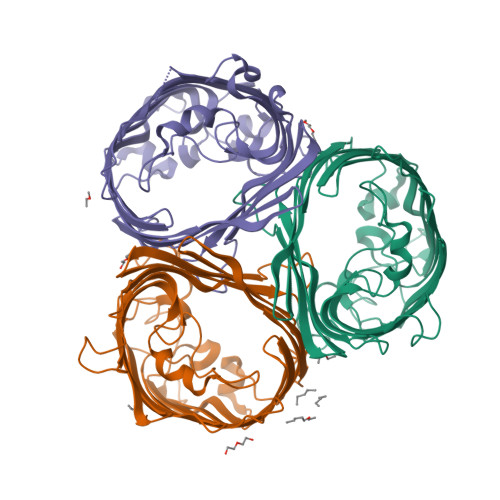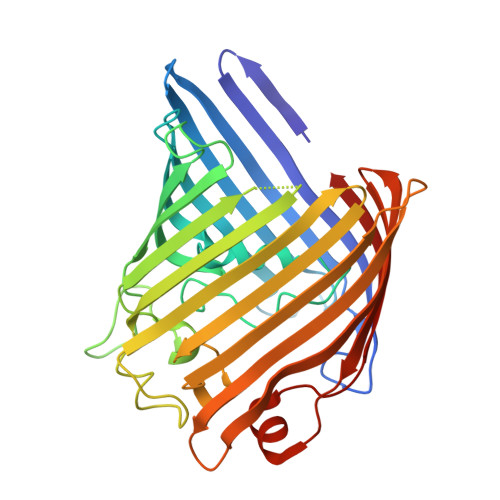Getting Drugs into Gram-Negative Bacteria: Rational Rules for Permeation through General Porins.
Acosta-Gutierrez, S., Ferrara, L., Pathania, M., Masi, M., Wang, J., Bodrenko, I., Zahn, M., Winterhalter, M., Stavenger, R.A., Pages, J.M., Naismith, J.H., van den Berg, B., Page, M.G.P., Ceccarelli, M.(2018) ACS Infect Dis 4: 1487-1498
- PubMed: 29962203
- DOI: https://doi.org/10.1021/acsinfecdis.8b00108
- Primary Citation of Related Structures:
5O77, 5O79, 6ENE - PubMed Abstract:
Small, hydrophilic molecules, including most important antibiotics in clinical use, cross the Gram-negative outer membrane through the water-filled channels provided by porins. We have determined the X-ray crystal structures of the principal general porins from three species of Enterobacteriaceae, namely Enterobacter aerogenes, Enterobacter cloacae, and Klebsiella pneumoniae, and determined their antibiotic permeabilities as well as those of the orthologues from Escherichia coli. Starting from the structure of the porins and molecules, we propose a physical mechanism underlying transport and condense it in a computationally efficient scoring function. The scoring function shows good agreement with in vitro penetration data and will enable the screening of virtual databases to identify molecules with optimal permeability through porins and help to guide the optimization of antibiotics with poor permeation.
Organizational Affiliation:
Department of Physics , University of Cagliari, Cittadella Universitaria di Monserrato , SP Monserrato-Sestu Km 0.8 , Monserrato , 09042 , Italy.


















